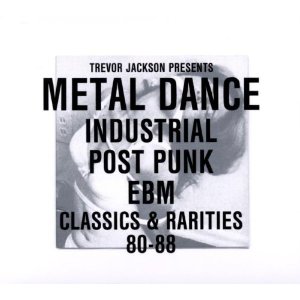Talking on an American radio station in 1978, Kraftwerk’s Ralf Hütter explained the relationship between man and machine that had resulted in their similarly named pivotal LP. "Well, the idea is really to be on the same level. That’s why we call ourselves ‘the man machine’, which means the machines are not subservient to us and we are not the sounds of the machine, but it’s some kind of equal relationship, or you might even say friendship between man and machine, and not opposed. So really, we get some really sensitive exchange with our musical machines."
Contrasting the music they were making with other electronic bands of the mid 70s Hütter anticipated the influence that the Düsseldorf visionaries would have on electronic musicians from Detroit to Manchester. "We have now composed some kind of electronic body music, because electronic music, basically like Tangerine Dream, has been mainly connected with brain music, where you sit back in your armchair and put on headphones, and fly off into space, some kind of cosmical consciousness type of music. Where we were always interested with Kraftwerk in including society and really environmental music, earth music, city music, and now we have done something which we call electronic body music, where we can, we have invented some influence, where you can stimulate electronic sounds with the movements of your body, by moving up your arms and legs, and your whole body."
Whether through the stark industrial funk of Cabaret Voltaire in the North of England or the raw electro punk of Liaisons Dangereuses part of Germany’s Neue Deutsche Welle, forward-looking bands tore down the old order with dark yet funky music that spoke of the Ballardian truth all around them. Whereas punk’s garage bands had stuck up a healthy two fingers to the electronic excesses of bands like Yes, these groups reclaimed the electronic impulse to create direct and deeply funky music every bit as revolutionary as their anarchic forbears.
While it wasn’t until 1984 that the term Electronic Body Music was picked up again by Front 242 on their LP No Comment, as this deep compilation shows the music’s impact was strongest from 1980 through to 1988. Digging into the deepest corners of his collection, Playgroup’s Trevor Jackson comes up with a selection of classics and rarities that continue to resonate today. Setting the tone brilliantly for an album that veers to the rare end of the EBM spectrum, is the totally out there and brilliant ‘The Bubblemen are Coming’ by The Bubblemen (of course!). Anyone following the post Bauhaus direction of Daniel Ash’s Love & Rockets would hardly have expected the cosmic electro psych that opens this LP and the accompanying video is a classic of its type even if you can’t quite work out what the type is.
Next up two bands you are more likely to associate with the genre. Taking their name from François Truffaut’s new wave classic, 400 Blows were formed in Croydon in 1981 by Andew E Beer. By 1984 the legendary underground musician, producer, and label boss Tony Thorpe had joined the band. Thorpe would go on to make the first UK acid tracks and more recently turn to dubstep with a heavy nod to his Croydon roots. Back in the mid 80s, Thorpe was a soulboy steeped in electro and dub, and those influences can be heard loud and clear on ‘Pressure’. While other London bands like Psychic TV released hugely important electronic music through the early 80s, it was the North of England that became renowned as the home of EBM in the UK. Bursting out of Sheffield with their cut and paste aesthetic, Cabaret Voltaire epitomized the post punk attitude that made this scene so exciting. You could pick nearly any of their tracks from the 80s and they still sound prescient today. While ‘Yashar’ might have been an obvious choice, ‘Seconds Too Late’ from a 1980 7" is equally as impressive. Tense and haunting music for the heads.
The first track included from outside of the UK is Neon’s ‘Voices’ one of the early New Beat tracks taking heavily from Master C & J’s Trax house classic ‘When You Hold Me’. While New Beat certainly looked to Chicago for its inspiration, the early beat makers on labels like Trax were heavily influenced by European electronic productions and there are plenty of tracks here that became staples in the sets of Music Box DJ Ron Hardy. Tracks like Nitzer Ebb’s ‘Control I’m Here’ and Fini Tribe’s ‘Die Testimony’ that not only brought chaos to mid 80s Chicago but also later destroyed UK Acid House clubs like Spectrum and Future.
However, despite its title this selection is not just about the dancefloor and there is plenty of music here for the head as well as the feet. About as heavy as industrial music got, Einstürzende Neubauten became known for their intense live performances using metal implements in an act of creative destruction not dissimilar to the UK’s Test Department. The track we get here is ‘Yu Gung’ remixed by the mighty Adrian Sherwood. While not likely to scare the neighbours quite as much as ‘Yu Gung’, Mark Stewart’s ‘Fatal Attraction’ was equally as aggressive in its opposition to Thatcherism as Einstürzende Neubauten were to a divided Germany. As one blogger recently commented "who else can sample Michael Jackson and Donna Summer and make it sound dangerous". On an LP that whets the appetite for Trevor Jackson and the legendary 23 Skidoo at London’s Electrowerkz, other highlights on one of Strut’s best compilations to date include Yello’s typically odd but brilliant ‘You Got to Say Yes To Another Success’ and an inspired version of T-Connection’s ‘Do What You Wanna Do’ by The Cage (feat Nona Hendryx). Essential.


